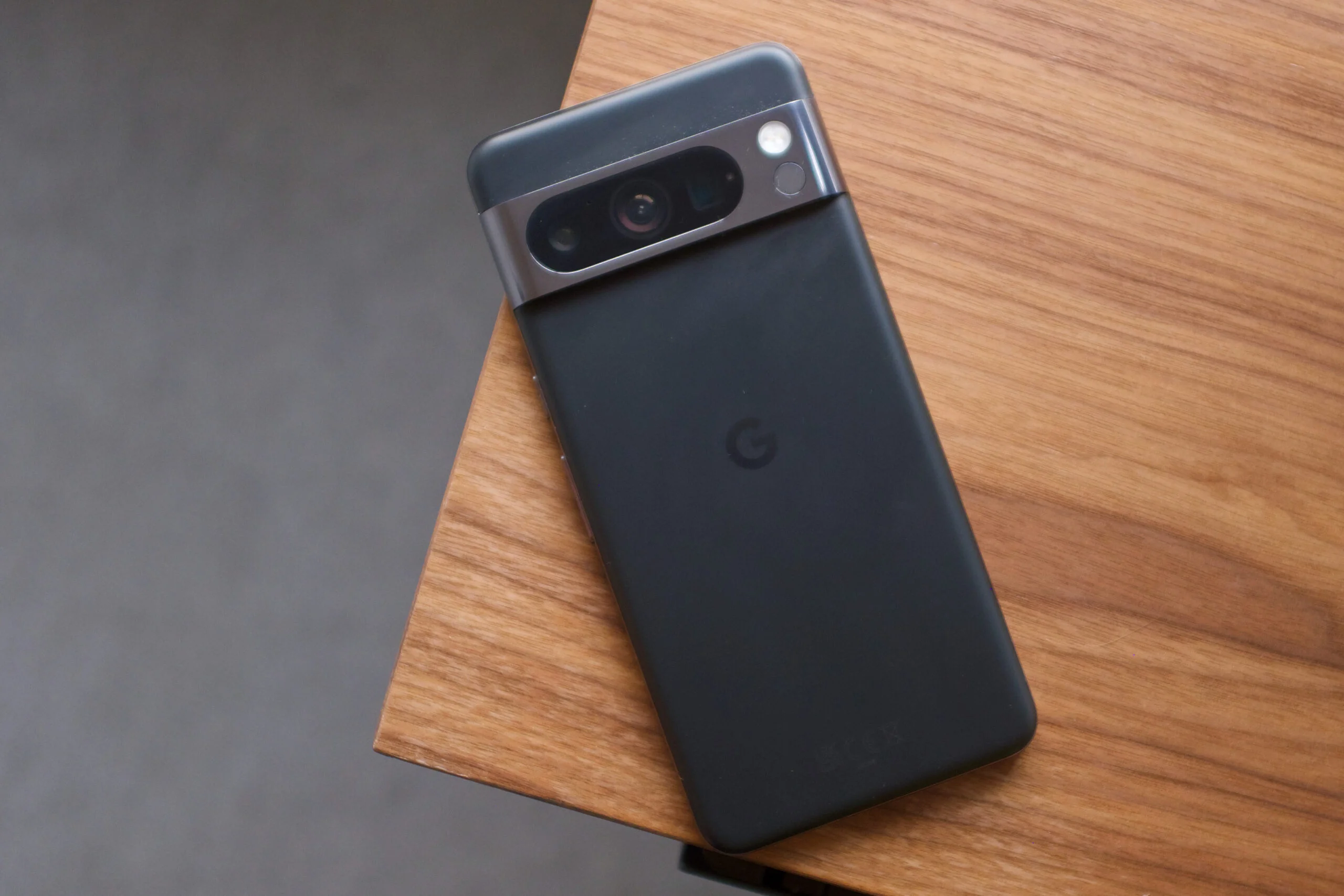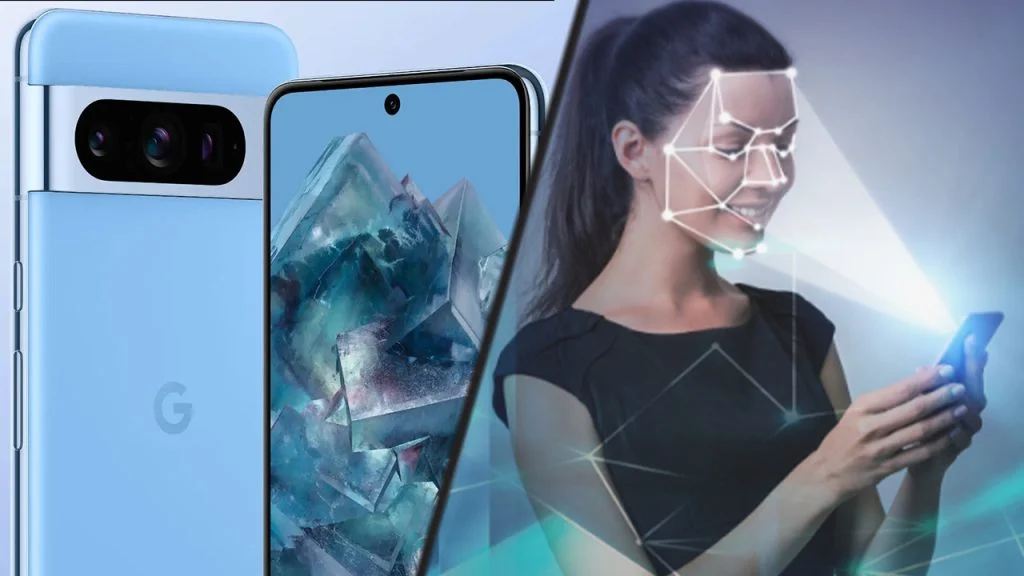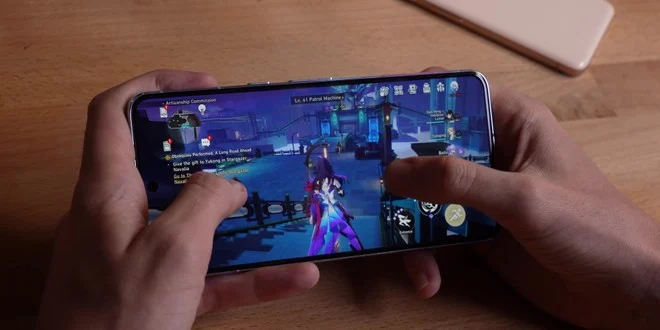Diving into the Pixel 8 Pro, it’s like meeting an old friend with a new vibe. Google’s kept the familiar stuff – slick design, better materials, and a brighter screen. The real deal? Upgrades everywhere – Tensor G3, solid battery, and top-notch cameras. What caught my eye? This phone’s promising seven years of updates, a first for Android. This review spills the beans on what’s cool and what’s not. No jargon, just real talk about the Pixel 8 Pro. Let’s break it down together.

In short:
Pros:
Excellent Cameras: The camera performance stood out, providing impressive results in various conditions.
Great Battery Life: The device boasts a strong battery life, easily lasting through a day of regular use.
Design and Size: The phone’s design, though subjective, appealed to me. The weight and size were comfortable, but the prominent camera bump might not suit everyone.
Seamless Integration with Google Watch 2 and Withings Scanwatch: The device seamlessly worked with the Google Watch 2, and the experience with the Withings Scanwatch was positive.
Screen Quality: The display quality is excellent, providing vibrant visuals.
Cons:
Android Experience: As an avid iOS user, adapting to Android presented some challenges. Personal preferences play a significant role in this aspect.
Minor Software Glitches: Encountered occasional errors, such as camera focus delays when sharing via WhatsApp.
Design Subjectivity: The design, particularly the big camera bump, might not be universally appealing.
In Conclusion: The Google Pixel 8 Pro delivers a robust performance with standout camera capabilities, great battery life, and a design that may appeal to many. While the transition from iOS to Android may pose a learning curve, the overall experience, especially with Google ecosystem devices, is positive.
BODY and DESIGN:
TThe Pixel 8 Pro elevates its design, featuring a captivating matte back glass. Notable improvements include a lighter, more compact build with refined details. Despite maintaining a familiar frame and IP68 certification, the absence of a video output on the USB-C 3.2 port and the use of a 2.0 USB cable are minor drawbacks. Unlocking is seamless with the under-display fingerprint sensor, now complemented by advanced facial recognition.
The Pixel 8 Pro flaunts an enhanced flat-edged display, departing from impractical curved edges. The resolution shift to 1344 × 2992 doesn’t compromise visual quality, and the peak brightness of 2400 nits ensures vibrant outdoor usage and impressive 4K video recording.

SOFTWARE:
The Pixel 8 Pro introduces a bold seven-year update policy, encompassing security patches, major updates, and feature drops. This ambitious approach sets a new standard for long-term support in the smartphone landscape.
Challenging the conventional belief of an annual smartphone upgrade, Google’s software strategy for the Pixel 8 Pro revolves around Cloud and AI integration. Features like the Magic Editor, upcoming Video Boost, and AI-generated wallpapers showcase a trend where hardware serves as a conduit to the Cloud.
Among the new integrated features, the Magic Editor allows rearranging people within photos, demonstrating promise despite being in beta. Noteworthy is the ability to alter facial expressions in photos and the introduction of the Magic Audio Eraser for videos, offering flexibility in managing audio sources.
Video Boost, including Night Videos, holds intrigue, but a comprehensive evaluation awaits testing. While not revolutionary, the diverse set of AI-powered features adds versatility, offering tangible applications.
A pivotal highlight is Android 14, introducing crucial improvements and optimizations for Tensor processing. This directly impacts the Pixel 8 Pro’s performance, delivering advancements in SOC/battery temperatures and overall efficiency.

TENSOR G3 PERFORMANCE:
Now, let’s dive into one of the most debated aspects of the Pixel 8 Pro: the Tensor G3 and concerns about high temperatures and battery drain. To set the record straight, my experience with the device has been exceptionally positive. During testing, battery temperatures never exceeded 42°C, the chassis remained comfortably warm (in line with other flagship devices), and the overall performance, including gaming, was on par with other top-tier smartphones.
Video editing with CapCut and intensive navigation with Maps under challenging conditions demonstrated the Pixel 8 Pro’s capability, comparable to other leading flagship devices. Google’s attention to maintaining optimal performance during resource-intensive tasks, even under prolonged usage, makes the Pixel 8 Pro a reliable companion for various demanding scenarios.

PIXEL 8 PRO CAMERAS:
The Pixel 8 Pro doesn’t revolutionize the Pixel 7 Pro’s photography experience but significantly enhances every aspect. With features like autofocus for the selfie cam, a new 48MP ultrawide sensor, a 50MP main camera, and improved lenses, especially for the 5X periscope telephoto capturing 56% more light, the camera setup impresses.
The main camera’s transition from an Isocell GN1 to a GNV sensor, coupled with f/1.68 lenses, maintains excellent results. The 50MP sensor, paired with these lenses, captures 21% more light, resulting in less noisy and less blurry photos. The OIS remains, ensuring stability. The 48MP ultrawide sensor and its f/1.95 aperture deliver detailed shots and an optimized macro function, focusing from 2cm. The color consistency, akin to the main camera, is noteworthy. The 4K/60fps video capabilities across all cameras, without restrictions, showcase Google’s commitment to versatile video creation.
The 5X periscope telephoto, now at f/2.8, performs admirably in architecture and landscape shots. While lacking portrait mode functionality, it excels in providing optical stabilization for powerful zooming. The 10.5MP selfie camera, now featuring autofocus, produces natural-looking selfies with improved bokeh control. The video recording, although not reaching 8K, handles 4K/60fps capably across all four cameras, boasting excellent stabilization. The system’s autofocus, while improved, needs further optimization.
The photography pro mode introduces professional manual controls, RAW+JPEG shooting options, and maximum resolution captures for all three main cameras. While RAW files are customizable, Google might consider refining them further for competitive prowess.
Please keep in mind that Google approach to photography is the one of “computational photography” where the software pushes the limits of the hardware.

CONCLUSIONS:
Drawing conclusions about the Pixel 8 Pro proves to be straightforward, as it undeniably represents a significant leap forward. Summing up the key points:
- Brighter, Non-Curved Display: The Pixel 8 Pro introduces a brighter, flat-edged display, departing from impractical curved edges. This enhances visibility and usability, particularly outdoors.
- Extended Battery Life: Noteworthy improvements in battery life contribute to an extended and reliable usage experience.
- Optimized SOC: The Tensor G3, coupled with a well-optimized SOC, delivers robust performance across various tasks, including gaming and resource-intensive applications.
- Comprehensive Camera Enhancements: The 360-degree improvements in the camera system, including autofocus for the selfie cam, upgraded sensors, and improved lenses, result in a more versatile and capable photography experience.
- Graceful Aesthetics: The aesthetic refinement of the Pixel 8 Pro, marked by the matte back glass and sleek design, adds a touch of elegance to its overall appeal.
- Enhanced Audio and Connectivity: I did not even talk about it but the Pixel 8 features improved reception, speakers, microphones, and advanced connectivity features like WiFi 7 that contribute to an enriched user experience.
Beyond these hardware upgrades, the Tensor G3 introduces a host of software improvements, such as secure facial recognition and advanced photo/video editing functions. While acknowledging its imperfections and the 1099 euros price tag for the 128GB variant, it’s essential to recognize the value proposition.
TECH SPECS:
I know some of you desperately want them ;-)
Display: Super Actua OLED LTPO 6.7″, 1344×2992 resolution, 20:9 aspect ratio, 489ppi, 1-120Hz refresh rate, AOD (Always On Display), 1,600nit (HDR), 2,400nit (max), contrast ratio >1,000,000:1, HDR, full 24-bit color depth, 16 million colors, Corning Gorilla Glass Victus 2.
Processor: Google Tensor G3 with Titan M2 security co-processor.
Memory:
Materials: Gorilla Glass Victus 2 (matte front and back with polished aluminum frame), 100% recycled aluminum, total 18% recycled material.
Security: Included Google One VPN, end-to-end security, multi-level hardware security, Private Compute Core, Android System Intelligence, anti-malware protection, anti-phishing (including passkey support), end-to-end encryption for Messages app, and Android backup encryption.
Authentication: In-display fingerprint sensor, face unlock (including for banking apps and Google Wallet).
Dual SIM: Nano SIM + eSIM.
Connectivity: 5G, WiFi 7, Bluetooth 5.3 with dual antennas, NFC, USB-C 3.2, GPS, Ultra-wideband chip for signal precision and spatial orientation.
Audio: Stereo speakers, 3 microphones, noise cancellation, spatial audio.
Resistance: IP68.
Sensors: Proximity, ambient light, accelerometer, gyroscope, magnetometer, barometer, temperature.
Cameras:
Front: 10.5MP Dual PD, 1.22μm pixels, f/2.2, AF, 95° FOV.
Rear:
50MP Octa PD, 1.2μm pixels, f/1.68, 82° FOV, 1/1.31″ sensor.
48MP Quad PD ultra-wide, AF, 0.8μm pixels, f/1.95, 125.5° FOV, lens correction.
48MP Quad PD telephoto, 0.7μm pixels, f/2.8, 21.8° FOV, 5x optical zoom, high-definition zoom up to 30x.
Multizone LDAF sensor, spectrum, and flicker sensor, optical and electronic stabilization with wide-angle and telephoto lenses.
Pro controls.
Video up to 4K at 24/30/60fps.
Updates: 7 years.
Battery:
5,050mAh capacity, 30W charging.
0-50% in 30 minutes.
Wireless charging, Qi certification.
Battery share feature.
Dimensions and Weight: 162.6×76.5×8.8mm, 213g.
Colors: Obsidian Black, Clay Gray, Sky Blue.